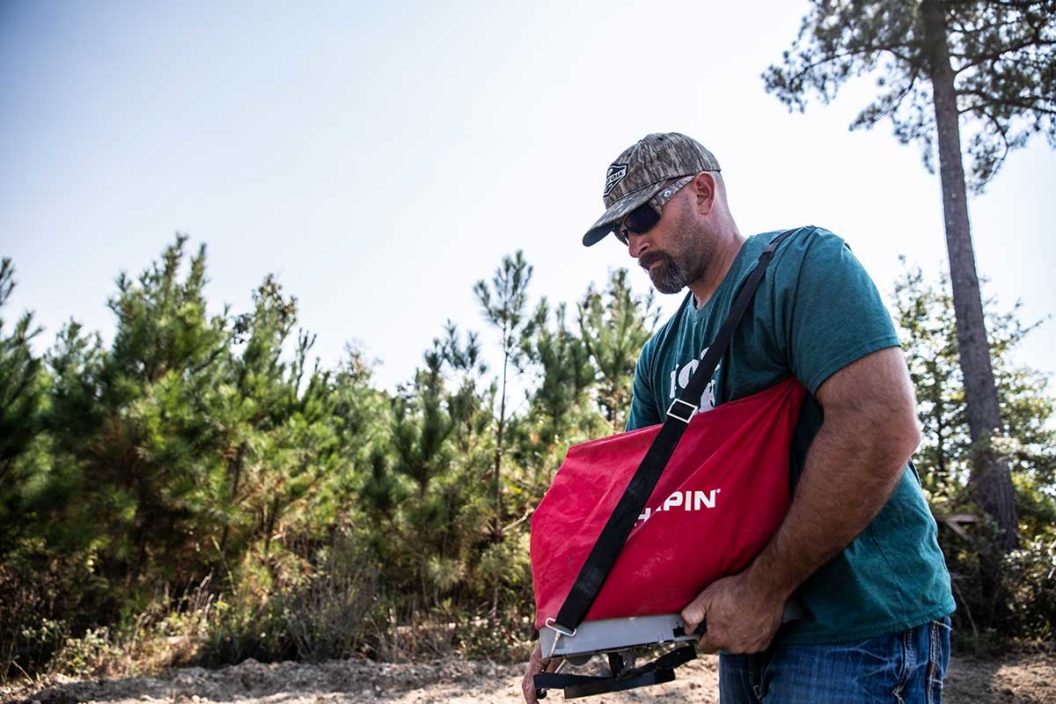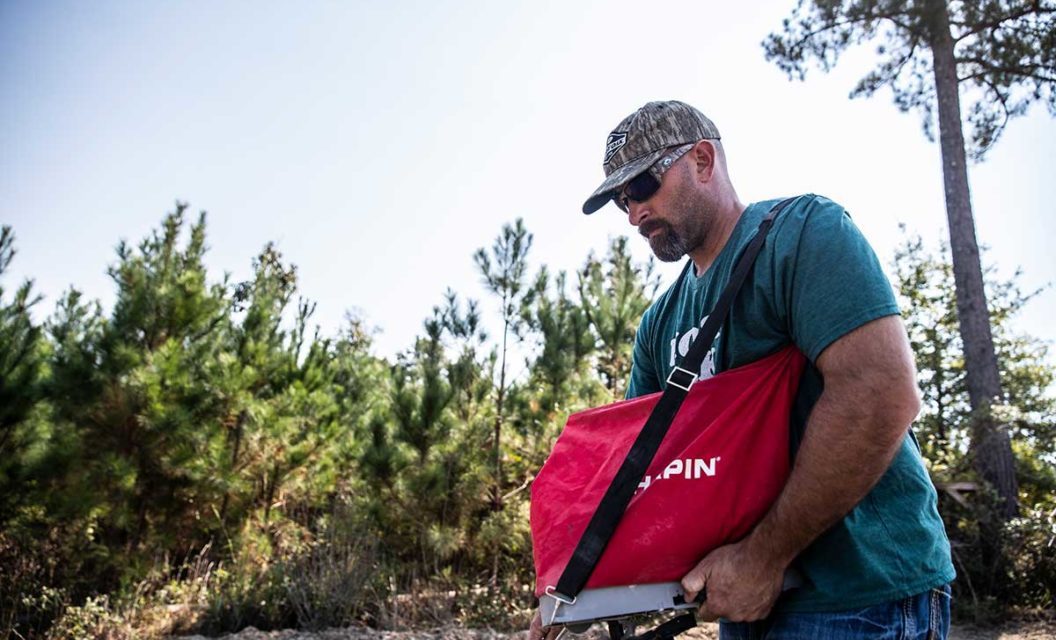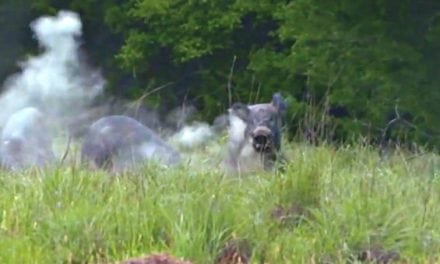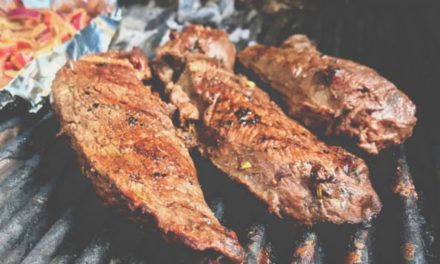
Managing your own deer hunting property successfully is extremely difficult.
There are dozens of different things that you could do to bring in more deer, and grow higher quality deer. Obviously, deer habitat management is a huge subcategory in deer hunting, and there are entire businesses based on it.
So you do not have to look very hard to find resources on the internet telling you what you should do on your property to grow bigger deer. Although improving a deer herd takes time.
How can you gauge how good of a job you are doing in the meantime?
Neglect a Little Summer Time Activity
Healthy properties will have plenty of deer on them during the summer months. This is the prime time deer are bulking up, and they are going to follow their summertime patterns well into September and early October. I would rather have a shot at my target buck in September and October than have him spend that time on the neighbor’s property.
During the summer deer are going to spend the most time around nutrient-rich food sources. This is where your food plots are going to shine. You have a good chance of seeing a bachelor group of bucks in your food plot, but if you don’t, they are likely spending more time elsewhere.
Of course, you are not going to see every deer that goes to your food plot, but with good camera placement you should be seeing a fair amount of the bucks. If there is not a whole lot of deer activity on your property during the summer and you already have food plots, there is something else wrong.
If that’s the case, make sure you are not putting too much pressure on the area. Pressure includes anything that puts a person in the woods including tree cutting, ATV riding, or just poor scouting practices. Act like you’re hunting, with scent control, wind acknowledgement, and attention paid to deer sanctuaries on your land applied whenever you’re managing your property.
Small Yearling Bucks
If you want quality bucks over time, yearlings are just as important as your five-year-olds. Not all of them are going to make it to maturity, but they are your future shooters. You need to make sure that they are getting everything they need and are growing to the best of their ability.
A lot of people think that if you have a spike on your property you should instantly look to cull it. In my mind, and with the backing of plenty of research, shooting spikes is generally bad for a wild deer population. However, the fact that you have spikes on your property can actually tell you a lot about the herd’s health.
Just about every buck will be larger than a spike their first year if they have ample nutrition available. The normal yearling buck should have some sort of curve to the main beams and four or more points. If your yearling bucks don’t look like that, then they are not getting enough nutrition.
This does not immediately mean you have to go out and plant five more food plots, but if you don’t already have a food plot or two, that is a good place to start. It could also mean that there are just too many deer on the property to begin with. If you suspect that the amount of food on the property is more or less constant each year, removing a handful of deer will leave more food for the rest of the deer, assuming natural cycles. If you aren’t applying this info to your hunting season strategy, you’re doing it wrong.
The short of it is, if your yearling bucks are still spikes, they need more food. You can give them that by adding more food yourself or taking a handful of deer off the property each year. Removing deer is an effective strategy here, but it is also useful for evening out the doe-to-buck ratio. That leads us to the next example of a poorly-operated deer management plan.
High Doe-to-Buck Ratio
A key indicator of how a property is doing is its doe-to-buck ratio. Habitat managers all across the country are fixated on this ratio and always try to get it as close to 1:1 or 2:1 as possible. If a property is left alone, the natural doe to buck ratio will be around three to six does per buck.
Although on poorly managed lands, or states (cough cough, Georgia), the doe to buck ratio is much higher. It can get as high as 10 does to every buck if hunters are really shooting every buck they see. The good thing is, nature does an amazing job at leveling out that ratio if you leave it alone.
There are multiple strategies out there to help you estimate your doe-to-buck ratio fairly accurately. If you use them and find that your doe-to-buck ratio is a little high, then consider taking a few does off the property. If it is around three does to every buck, then I would say you are doing pretty good.
Bucks in the wild can breed around eight does every rut before they are completely exhausted from chasing. So, if there are tons of does and not that many bucks, there will be little or no rut competition. Although with a lower ratio, you will get a more aggressive rut, and therefore more bucks. I’d call that a win-win.
Poor Fawn Recruitment
I said before that yearling bucks were just as important as your shooter bucks because they are the future shooters. Well, fawns are the future yearlings. You generally want as many fawns as you can get. You should try your best to keep an eye on how many fawns you get each year, and whether or not does are having multiple fawns.
In general, there are three ways to check fawn recruitment. The first way is to use a trail camera survey. This is also a popular way to track your doe-to-buck ratio, so a trail camera survey in June and July can kill two birds with one stone.
Make sure you are casting a wide net with your trail cameras. This is a little different than what you may normally do. For example, instead of hanging three cameras in the area around a scrape or scrape line to watch bucks, just hang one and spread those other two out. Cover as much ground as possible to see as many deer as possible.
In reality, the simplest way to do a fawn recruitment survey is through hunter observations. This takes place during the season and may be a little more accurate than a trail camera. If you put your trail cameras out after fawns are losing their spots, you will probably see more fawns since they are not in hiding, but they will also be harder to distinguish between young does. Although, an experienced hunter can easily tell the difference live in the stand. That same hunter would have a lot harder time telling if a deer was a fawn from a single trail cam picture at a possibly bad angle.
Lastly, you can tell if a particular doe had a fawn by seeing if they were lactating or not. Obviously, this is the sort of thing you have to ground check. It is a surefire way to tell if a doe had a fawn that year. If you take a few does later in the year and they are all lactating, then it is a pretty good indication that the fawn recruitment as a whole was decent.
As one last piece of advice, you should also consider taking out coyotes in the area if you know they are there. In some parts of the country, you do not have to worry as much, but in some states I’ve hunted I see more coyotes than deer. Predator control is a legitimate way to help the deer herd in your area.
All in all, pay attention to your property throughout the year, and apply some plans to make changes if they’re needed. Operate your deer property that way, and you’ll be setting yourself up for bigger and better things once the season rolls around.
READ MORE: THE 10 BEST STATES TO HUNT WHITETAIL DEER IN THE U.S.
The post Deer Property Management Mistakes That Result in Poor Hunting appeared first on Wide Open Spaces.
















